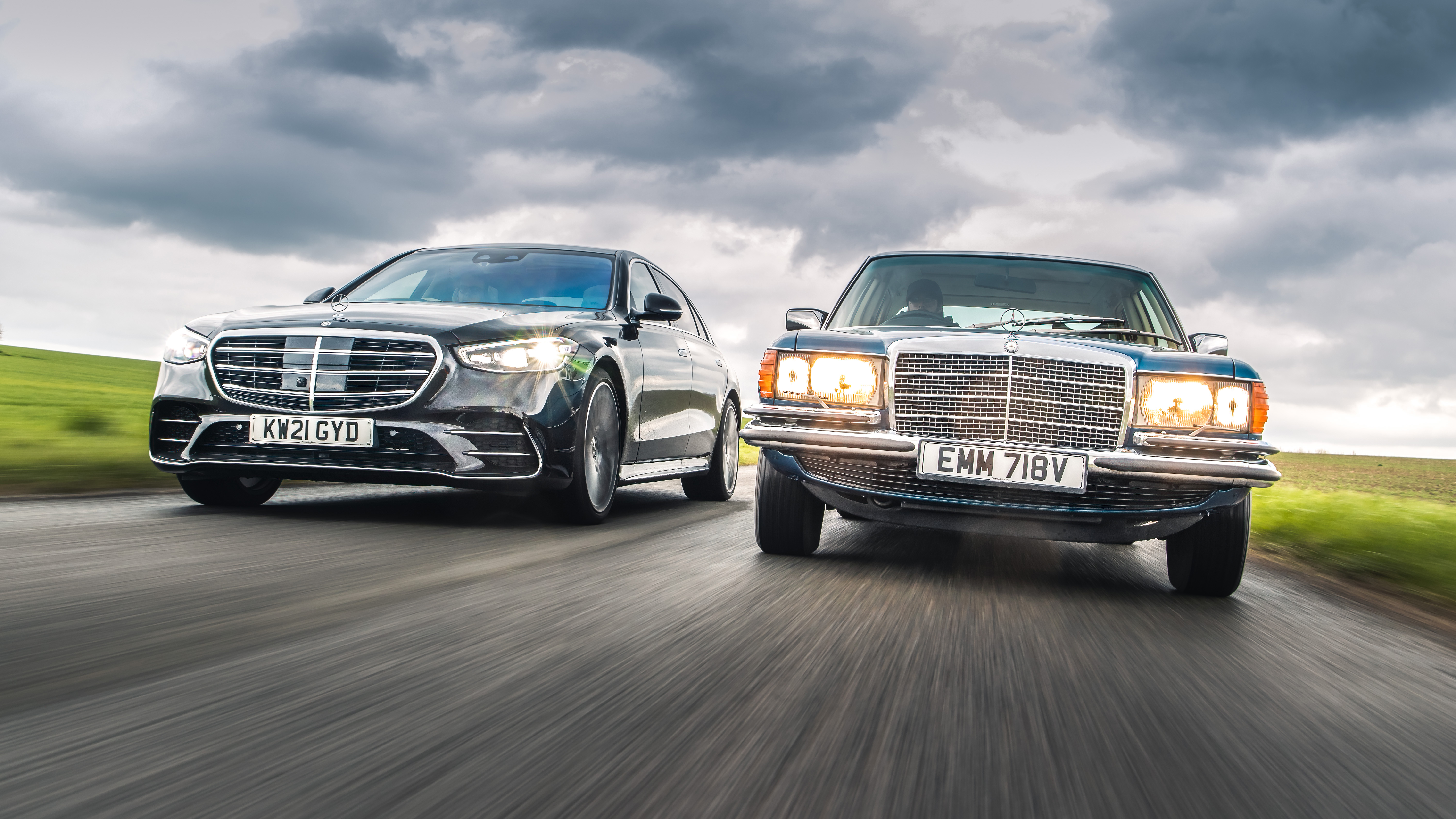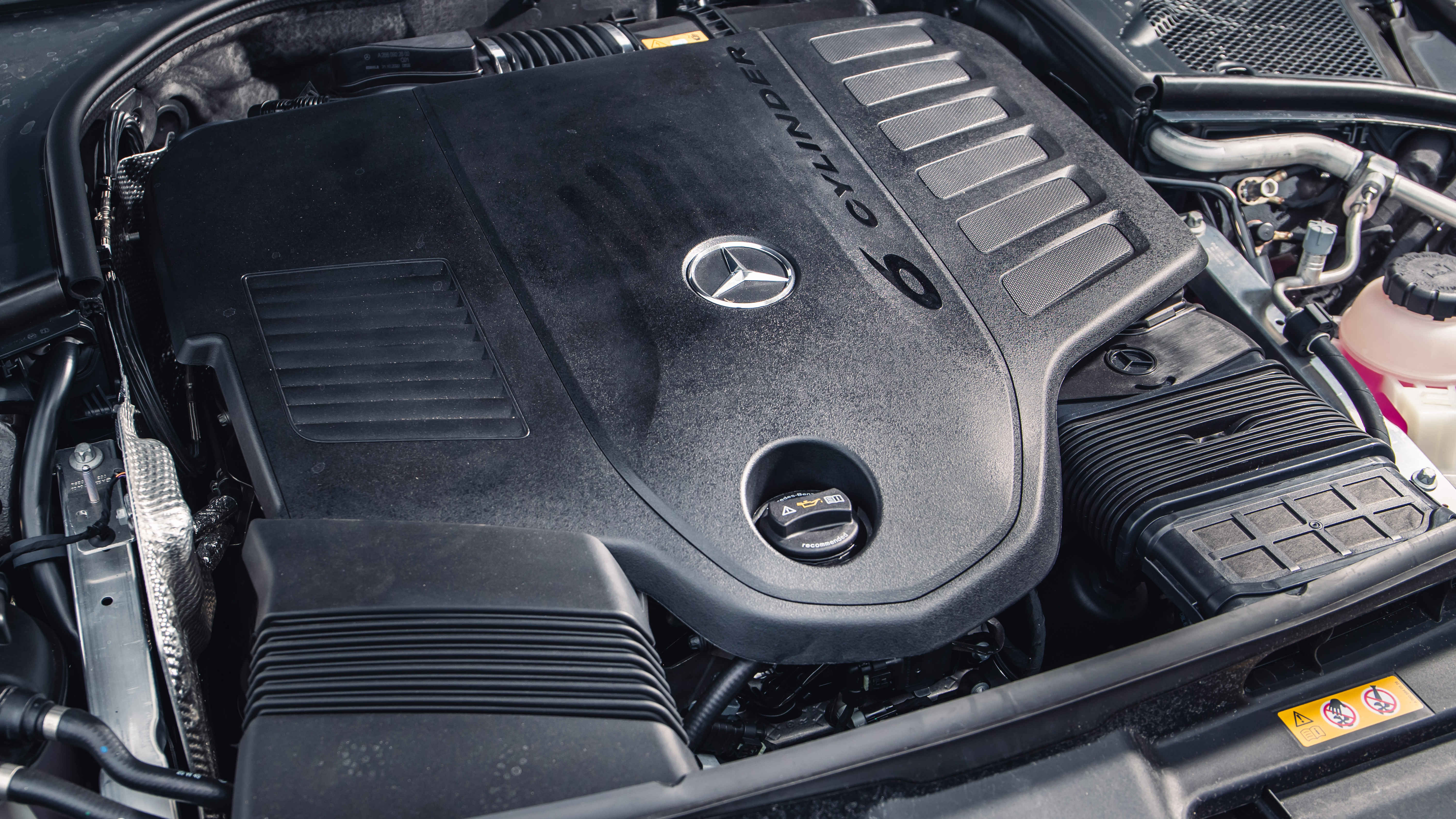
Progress report: Mercedes 450 SEL 6.9 vs Mercedes S500
Almost 50 years separates the first from the most recent S-Class
I recognise that big old Benz…
So you should. The 450 SEL 6.9 made a brief but memorable appearance in John Frankenheimer’s Ronin – a film that ought to be mandatory viewing for anyone reading this website, if you ask me. It was the car to which French director Claude Lelouche strapped a 35mm camera, and drove at high-speed through Paris early one Sunday to create C'était un rendez-vous. James Hunt had one. So too did Frank Sinatra. Sophia Loren had hers converted from a saloon to an estate so it could better accommodate her dogs.
It is without doubt one of the coolest Mercedes ever built. And what better excuse to have a go than the launch of a new S-Class.
Give us some history.
The ‘W116’ wasn’t Merc’s first flagship saloon, but it was the first to officially adopt the S-Class name (short for Sonderklasse, or ‘special class’).
Mercedes had planned to release the 6.9 soon after the standard car, which went on sale in 1972. But then the oil crisis hit hard, and a wise decision was made to postpone the release of the 6,834cc V8 (yes, Mercedes has a long history of creative rounding) uber limo for 18 months. The “M100” V8 was supposedly the largest engine yet fitted to a European production car since WW2, and in Merc’s own words, at the time “an engine with a displacement of 6.9-liters was, after all, difficult to sell, to put it mildly”.
The 6.9 was chuffing expensive too. Almost 70,000 German marks (DM) in 1976 – more than twice as much as an entry-level W116 and not far off a contemporary Rolls-Royce. And that’s before options. The Becker AT160S car phone was a 13,542DM extra. For context, back in ’76 a Mk1 Volkswagen Golf GTI cost 13,850DM.
Why so expensive?
Because the 6.9 was the ultimate Mercedes of its era – the Maybach S600 of 1975.
First it was hugely fast, with a claimed 0-62mph time of 7.4 seconds and a top speed of 140mph. Even by today’s standards it’s a quick car, though its huge 406lb ft of torque and slushy three-speed auto means the way it gains speed is more train-like than car-like.
Top Gear
Newsletter
Thank you for subscribing to our newsletter. Look out for your regular round-up of news, reviews and offers in your inbox.
Get all the latest news, reviews and exclusives, direct to your inbox.
Second, it was ridiculously comfortable thanks to hydropneumatic suspension (cheers, Citroen) that makes it smoother than most modern cars. In a straight line at least. In the bends it lists like a top-heavy freighter, but so did everything back in the Seventies. You can actually carry remarkably good speed through a series of bends, and the steering and brakes are more than up to the job.
Thirdly, it was notoriously over-engineered. Admittedly this particular 6.9 is well looked-after, but still. This is the most robust, modern-feeling classic I’ve driven. Just so tactile – all the switchgear has a slick, well-oiled action – and brilliantly refined. The engine and cabin are hushed, and the doors are actually heavier to swing shut than the new car’s even though they’re physically much less substantial.
It reeks of Teutonic solidity. I wouldn’t hesitate to drive it to Edinburgh and back in a day, assuming I was using someone else’s credit card to pay for fuel…
And what of the new car?
Interesting times for the S-Class, given the excellent new ‘W223’ is likely the last combustion-engined Sonderklasse Mercedes will make, and its heir apparent (the all-electric EQS) has already been revealed.
For the first time in its history, the S-Class is arguably not the Mercedes to look towards to see what tech ‘normal’ cars will have in the future. Because now we know the future is electric, and the S-Class simply isn’t. It remains a very forward-thinking thing in many ways, though – especially with regards digitisation and connectivity. It’s still the future, just not in totality.
And of course it is a tremendous car, as S-Classes tend to be to a greater or lesser extent. A hugely complete, comfortable thing. Click on these blue words to read our full review.
Do they have anything in common?
Of course the W116 and 223 don’t feel very similar, because they’re separated by 50 years and seismic technological shifts. But these two big Benzes do share a common confidence.
As my colleague Tom Ford wrote in 2013, it’s money vs power. “Even when money thinks it is being subtle, it shouts in a stage whisper, unable to contain itself. Power, on the other hand, well, real power invariably travels in a fast Mercedes S-Class.”
Images: Jonny Fleetwood
Trending this week
- Car Review
BMW iX3










